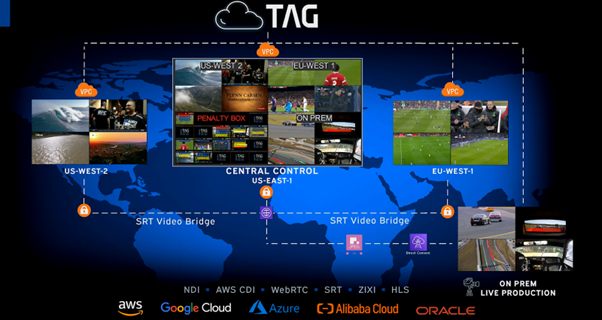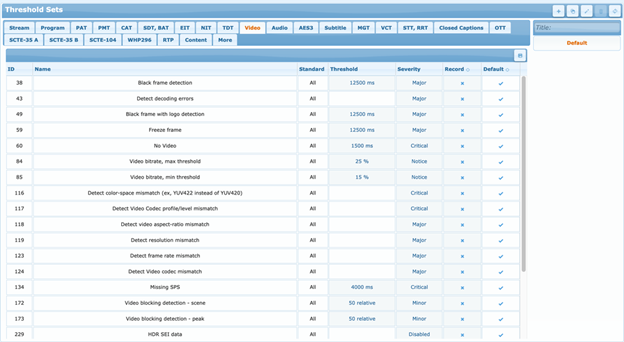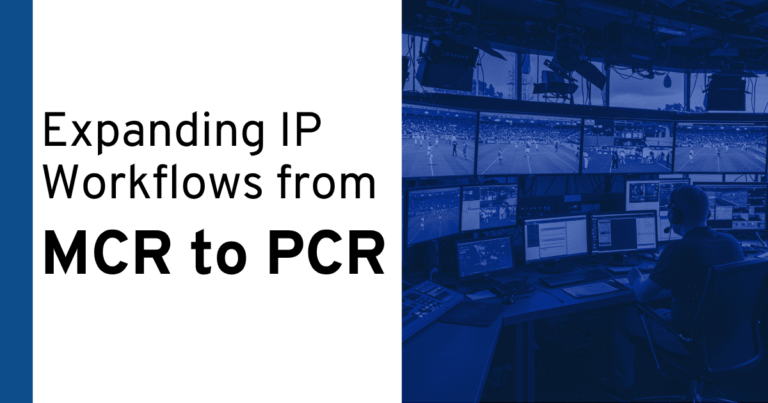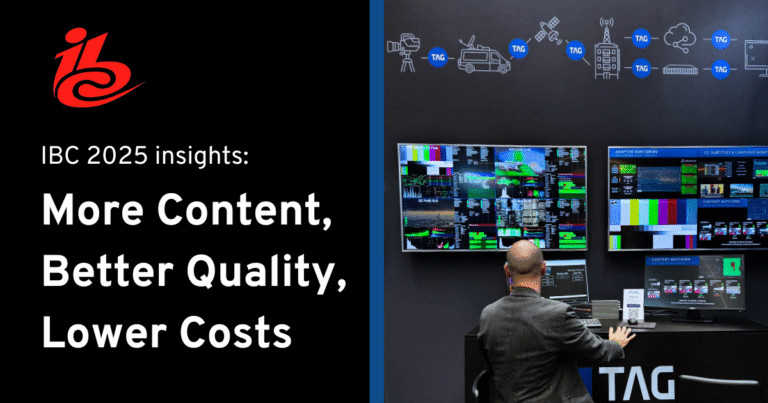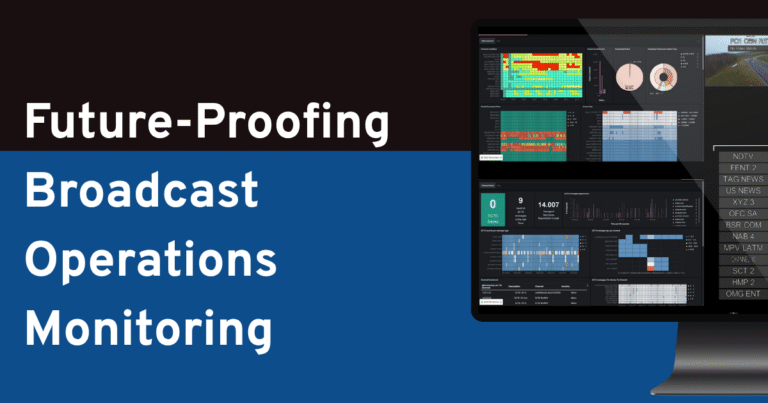fine-tune
verb (T)
us/ˈfɑɪn·tun/
to make very small changes to in (something) in order to make it work as well as possible
(Definition of fine-tune from the Cambridge Academic Content Dictionary © Cambridge University Press)
Fine-tuning sounds simple, unless you’re referring to broadcast—then those small changes aren’t very small at all. To unlock the full potential of a broadcast workflow broadcasters, media companies, and content owners are turning toward new technologies, such as cloud solutions and IP infrastructures. These technologies provide a path to business agility, increased automation, heightened productivity, and reduced expenses in an evolving media landscape. In other words, they “fine-tune” the broadcast workflow!
Cloud—A Boost for Business Agility
Transitioning to the cloud empowers broadcasters with unmatched agility and flexibility. By dynamically scaling resources to meet specific demands, streamlining workflows, and optimizing resource utilization, broadcasters can swiftly respond to changing audience preferences and market trends. The cloud’s versatility allows for hybrid ground/cloud workflows, offering the best of both worlds: operational efficiency and cost optimization.
Automation. Cost Efficiency. Scalability.
Traditional infrastructures incur unnecessary costs by overprovisioning or underutilizing resources. Cloud solutions harness the power of artificial intelligence and machine learning, automating labor-intensive tasks and fine-tuning content production and distribution workflows leading to simplified processes, increased productivity, and decreased operational costs. With cloud, organizations pay for only what they use, optimizing resource allocation and maximizing operational efficiency. The need for extensive hardware infrastructure and associated maintenance expenses are dramatically reduced, resulting in administrative cost savings.
Cloud’s scalability enables operations to easily adjust to sudden spikes in demand caused by fluctuating market trends and audience preferences, providing a secure path for growth and adaptation without significant upfront investments. Scalability ensures that businesses can efficiently manage content delivery and fulfill viewer expectations, reducing the risk associated with unpredictable audience demand.
Data Security and Regulations
Data security is of paramount concern for those migrating to cloud-based operations, and although cloud-based solutions offer a centralized approach to data security, organizations need to be vigilant. They must choose cloud providers—for example, AWS (more on that later)—that adhere to industry regulations and standards and deliver comprehensive security measures, such as robust data encryption, advanced access controls, and frequent security audits.
Navigating the Cloud Transition: Key Challenges and Solutions
There are challenges to be overcome for sure, but there is a path to a smooth transition. Existing applications will likely require adjustment to fit the new cloud environment, which demands both time and expertise. Investing in staff training to handle new systems and technologies is vital to ensure efficiency and minimize disruption.
Performance concerns like latency and interoperability are also key challenges when transferring workflows and data to the cloud. Current systems must seamlessly integrate with new cloud-based solutions requiring meticulous planning and thorough testing to prevent operational downtime or disruptions in live production.
With such a broad spectrum of potential issues, an operator’s ability to swiftly diagnose a problem is crucial, regardless of where a system is running (on-premises, cloud, or hybrid). But it’s not just about identifying disruptions; operators must be familiar with a broad range of systems and be adept at using diagnostic tools efficiently. As broadcasters move their workflows to the cloud, providing familiar and consistent automation tools to the operators while ensuring scalability and resiliency is critical. Utilizing effective monitoring and quality of experience (QoE) solutions that keep pace with these changes and help overcome challenges is more important than ever.
TAG & AWS: A Holistic Solution for Optimized Broadcasting
TAG’s software-based platform, which can run on AWS, is a comprehensive solution for modern broadcast monitoring. TAG’s deep analysis capabilities paired with AWS’s scalable infrastructure provide a powerful toolset for ensuring quality control and resource optimization. With real-time alerts, intuitive visualization, and seamless integration, broadcasters can easily manage complex workflows, proactively address issues, and adapt to industry changes. TAG’s software empowers efficient monitoring of numerous channels while leveraging AWS’s dynamic resource allocation for a truly optimized system. This unique combination of software innovation and cloud infrastructure provides a holistic approach to meeting the intricate demands of today’s broadcasting landscape.
Set thresholds and severity for over 500 types of errors with TAG Realtime Media Platform
With 500+ deep-probing capabilities, user-defined thresholds allow notifications (including severity levels and durations) to be delivered as event-driven alarms to downstream systems. Combined with AWS’s managed services, including Amazon Managed Streaming for Apache Kafka (MSK), AWS Lambda, Amazon Simple Notification Service (SNS), and Amazon Simple Storage Service (S3), customers can automate the monitoring and switching of video content based on defined thresholds, from a simple notice to minor, major, or even critical alerts.
The IP Evolution
In addition to the cloud, today’s other hot topic in the media and entertainment industry is the move to IP. It’s becoming more common for traditional SDI workflows to be replaced with more reliable, scalable, and flexible IP-based solutions. IP supports swift adaptation to market shifts and allows broadcasters to expand their reach. There are many, many vendors involved, however, and various systems and devices need to play well together, and this can be extremely complex.
Platforms like the TAG’s Realtime Media Performance play a crucial role in simplifying this complexity. They offer a unified solution that supports interoperability among the many components involved in IP-based workflows. TAG Video Systems, with its 100 percent software, IP-native solution, continuously adapts to new formats, codecs, and industry changes, ensuring seamless integration and interaction between different solutions. This is vital for maintaining Quality of Service (QoS) and delivering an optimal Quality of Experience (QoE) to today’s audiences where responsiveness and seamless viewing experiences are key. Proper integration of these complex and evolving workflows is critical in today’s fast-paced media environment, ensuring the delivery of the best possible user experiences.
In Conclusion
In an industry that thrives on rapid change, the key to success is opening the door to new technologies such as cloud-based solutions and IP infrastructures. Together, these two protocols fine-tune broadcast workflows with unparalleled flexibility, efficiency, and scalability, enabling organizations to stay competitive today and be prepared for tomorrow.
